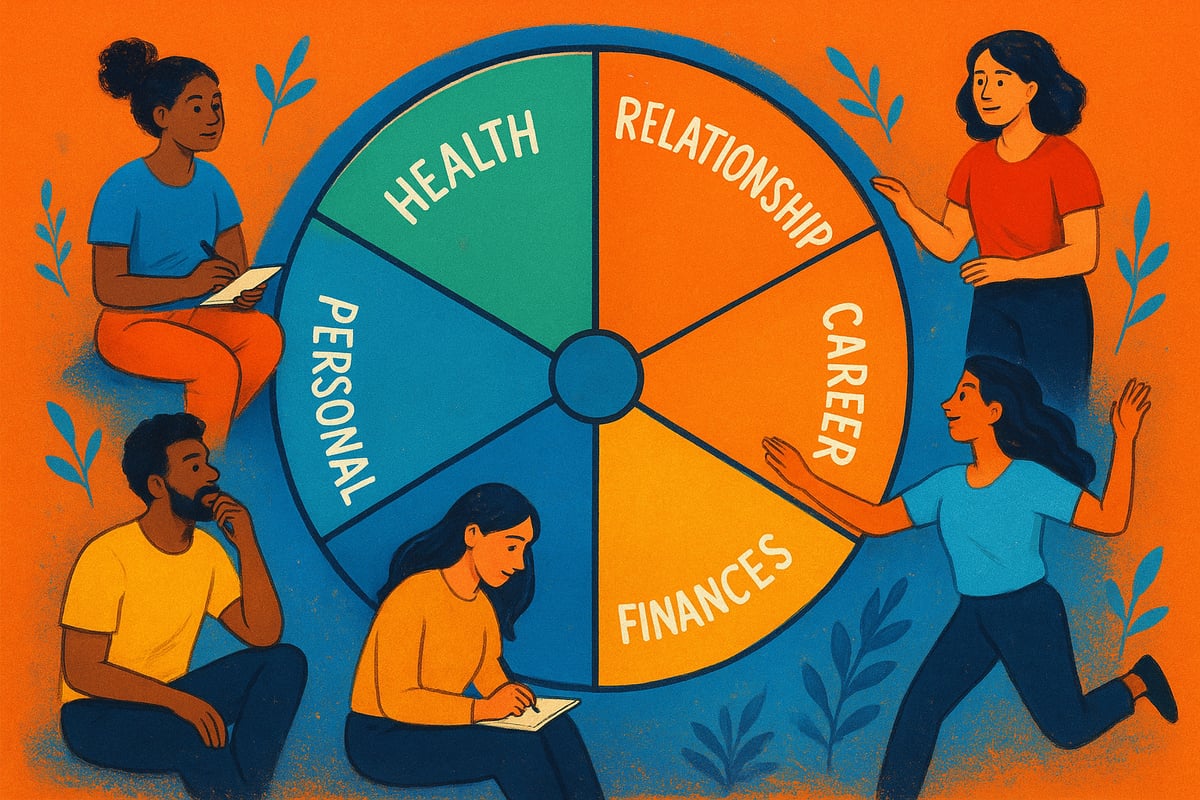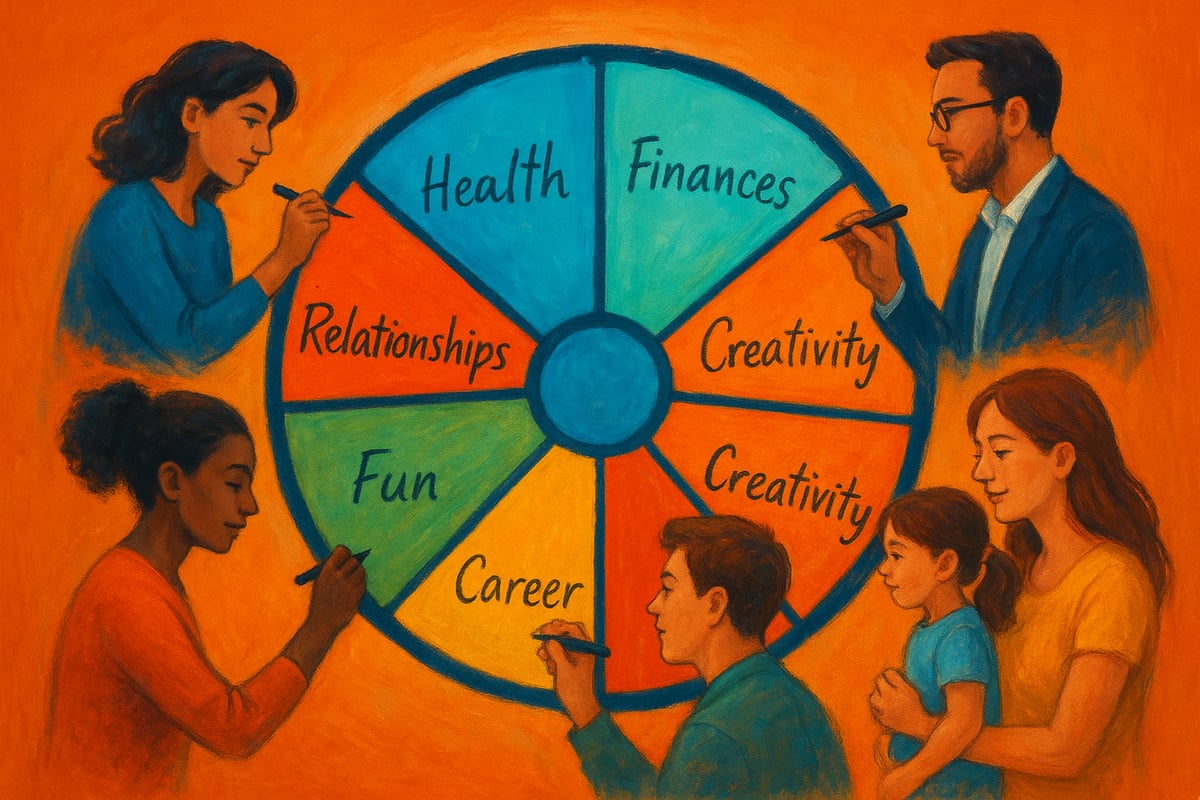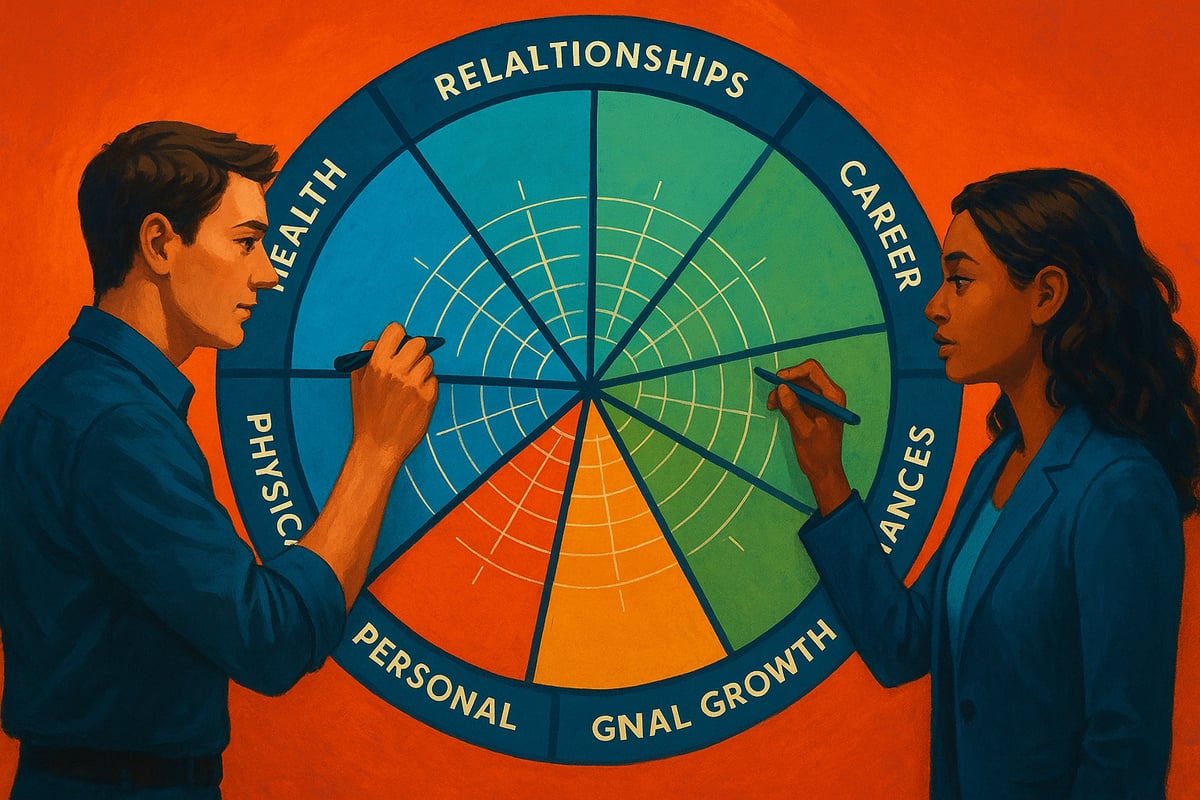Wheel of Life Assessment Guide for Personal Growth 2025
Are you ready to take control of your personal growth in 2025? Many people feel stuck or unbalanced as they juggle life’s competing demands.
The wheel of life assessment is a simple yet powerful visual tool used by coaches and individuals worldwide to map satisfaction across key life areas. By providing clarity, it helps you identify priorities and spark meaningful change.
In this guide, you will discover what the wheel of life assessment is, why it matters, how to tailor it for your unique journey, and the practical steps to use it for lasting growth. Let’s get started and chart your path forward.
What Is the Wheel of Life Assessment?
The wheel of life assessment is a widely recognized visual tool designed to help individuals evaluate their satisfaction across different areas of life. Created in the 1960s by personal development pioneer Paul J. Meyer, this assessment has become a staple among coaches and professionals aiming to foster holistic personal growth.
At its core, the wheel of life assessment serves as a diagnostic snapshot. It highlights where you are thriving and where imbalances may exist, making it easier to pinpoint which areas need attention. The process typically involves dividing a circle into 6 to 10 segments, each representing a key life category.
Common categories include:
- Health
- Relationships
- Career
- Finances
- Personal growth
- Fun
- Spirituality
- Environment
By rating each segment on a scale from 1 to 10, you create a visual map of your current life balance. If certain segments score much lower than others, the resulting lopsided wheel immediately reveals neglected areas that require focus.
The popularity of the wheel of life assessment stems from its simplicity, speed, and impact. Thousands of coaches worldwide use it in their programs, and it is regularly featured in professional coaching curricula. Its intuitive design makes it accessible for self-reflection and effective goal setting.
The tool’s flexibility allows for customization, whether you are focusing on personal development, professional growth, or organizational health. For those seeking templates or blank wheels, helpful resources are available at Accountability Now, making it easy to get started and adapt the wheel to your unique needs.
This visual approach empowers you to take control of your personal journey, offering clarity and actionable insights at a glance.

Why the Wheel of Life Assessment Matters for Personal Growth
Feeling stuck or overwhelmed is common in the pursuit of personal growth. The wheel of life assessment offers a structured way to bring clarity to your priorities, making it easier to see where your energy is best invested.
By visually mapping your satisfaction across various life categories, this assessment encourages honest self-reflection. It moves you beyond generic answers, helping you pinpoint both your strengths and areas that need attention. This process aligns your daily actions with your deeper values and long-term aspirations.
A key advantage of the wheel of life assessment is its ability to track progress over time. Whether you review it monthly or annually, you gain measurable benchmarks for growth. Coaches consistently report that clients experience increased fulfillment after addressing imbalances revealed by the assessment.
The tool also supports psychological well-being by addressing fundamental needs outlined in Maslow’s hierarchy, such as health, relationships, and personal achievement. By balancing effort across these domains, you can prevent burnout and maintain a sense of overall wellness.
Consider a client who excels in their career but neglects their health. The wheel of life assessment quickly highlights this gap, prompting focused action for sustainable success.
Ultimately, this tool is foundational for anyone seeking meaningful, measurable improvement across all areas of life. For customizable templates and practical guides, you can visit Accountability Now to deepen your journey.

Customizing Your Wheel: Choosing the Right Life Categories
Choosing the right categories is essential for an effective wheel of life assessment. Most standard templates use 6 to 8 categories such as health, family, finances, career, fun, and personal growth. These segments provide a starting point, but true value comes from making the wheel your own.
Personalization is key. Reflect on your current life stage, values, and goals. For some, "Vitality" might resonate more than "Health." Others may want to add "Creativity," "Contribution," or "Spirituality." Avoid a one size fits all approach. Customizing your wheel of life assessment ensures the process remains relevant and motivating.
Be careful not to use too few or too many categories. Six to ten is ideal. Too few may overlook important areas, while too many can feel overwhelming. Naming each category in your own words increases engagement and accountability. Consider what matters most to you right now.
Think about your age, circumstances, personality, and unique aspirations. For example, a musician might add "Artistic Expression," while a business leader could split "Career" and "Leadership." If you need inspiration or want a blank template, you can find free customizable wheels at Accountability Now.

Step-by-Step Guide: How to Complete Your Wheel of Life Assessment
Embarking on your wheel of life assessment can feel transformative when you follow a clear process. This step-by-step guide ensures you capture a true reflection of your life, identify priorities, and move forward with confidence.

Step 1: Define Your Categories
Begin by selecting 6 to 10 life areas that are most meaningful to you. Common categories include health, finances, relationships, and personal growth. Personalize the names for greater resonance. For example, you might use “Financial Freedom” instead of “Money.” Tailoring your wheel of life assessment in this way ensures it aligns with your unique journey.
Step 2: Rate Each Area
Next, assess your satisfaction in each chosen category. Use a scale from 1 to 10, with 1 representing very low fulfillment and 10 being optimal. Be honest with yourself—reflect your genuine feelings rather than what you think others expect. For instance, you might rate “Career” as 8 and “Fun & Leisure” as 4.
Step 3: Draw and Connect Your Wheel
On a circular chart, assign each segment to one of your categories. Mark your score on each segment, then connect the dots around the wheel. The resulting shape gives a visual snapshot of your current life balance. For a user-friendly digital experience, try the Wheel of Life Assessment Tool to map your scores with ease.
Step 4: Analyze Your Results
Examine the shape of your wheel. Are some areas consistently low or surprisingly high? Notice any patterns—perhaps “Personal Growth” scores well, but “Health” lags behind. Scores below 7 often indicate areas needing attention. Remember, initial disappointment is normal; let this clarity motivate positive change in your wheel of life assessment.
Step 5: Define What a “10” Looks Like in Each Area
Clarify your vision of peak satisfaction for every category. Write a brief statement describing what a “10” means to you. For example, “A 10 in ‘Health’ means daily exercise, balanced meals, and sufficient rest.” This vision guides your next steps and keeps your wheel of life assessment focused.
Step 6: Set 2-3 Action Steps per Category
Identify practical, achievable actions for each area, especially those with lower scores. Choose short-term steps that build momentum. For example, for “Fun & Leisure,” you might schedule a weekly art class or social activity. Emphasize progress in your wheel of life assessment by linking actions to measurable outcomes.
| Category | Action Step Example |
|---|---|
| Health | Take a 30-minute walk daily |
| Finances | Create a monthly budget |
| Relationships | Call a friend every weekend |
Step 7: Schedule Regular Reviews
Commit to reviewing your wheel of life assessment regularly—monthly, quarterly, or annually. Life evolves, so adjust your categories and goals as needed. Treat your wheel as a living tool, revisiting it to track growth and realign priorities. For more templates and guidance, visit Accountability Now.
Key Questions to Ask After Your Wheel of Life Assessment
After completing your wheel of life assessment, reflection is key to unlocking its full value. This process is not just about scores, but about understanding what your results mean for your personal growth journey.
Here are essential questions to guide your next steps:
- How do you feel when you look at your completed wheel?
- What patterns or imbalances are most noticeable?
- Are you dedicating too much energy to certain areas while neglecting others?
- Which categories truly matter most to you right now?
- How does your current stage of life influence your priorities?
- What would a “10” look like in each area for you?
- What specific, actionable goals can you set for each category?
- Are you satisfied with your overall balance, or is there a need for adjustment?
- What small changes could help you build positive momentum moving forward?
Remember, it is completely normal to experience mixed emotions when reviewing your wheel. Use any discouragement as motivation for change, not as a reason to stop. For additional templates and ongoing support, visit Accountability Now.
Tips, Pitfalls, and Sustaining Progress with Your Wheel of Life
Striving for a perfect “10” in every area is not the goal of the wheel of life assessment. Instead, focus on steady improvement and celebrate each step forward, such as moving from a 5 to a 7 in any life domain.
Avoid falling into the trap of perfectionism. Progress is meaningful, even if balance remains elusive. If you feel stuck or discouraged, remember that this is temporary. Small, consistent actions will gradually reshape your wheel and boost your overall satisfaction.
Make your wheel of life assessment a living tool. Revisit it regularly, whether monthly, quarterly, or as your circumstances change. Adjust your categories and goals to match your evolving journey. Personalize the process so it aligns with your unique needs and aspirations.
Leverage visual motivation by printing or displaying your wheel somewhere visible. This simple act keeps your intentions top of mind and encourages daily reflection. Sharing your progress with a coach, mentor, or accountability partner can also provide valuable support and insight.
For templates, inspiration, and ongoing resources, explore Accountability Now. Staying engaged and adaptable will help you sustain your momentum and continue growing long after your initial assessment.




Leave a Reply
Want to join the discussion?Feel free to contribute!